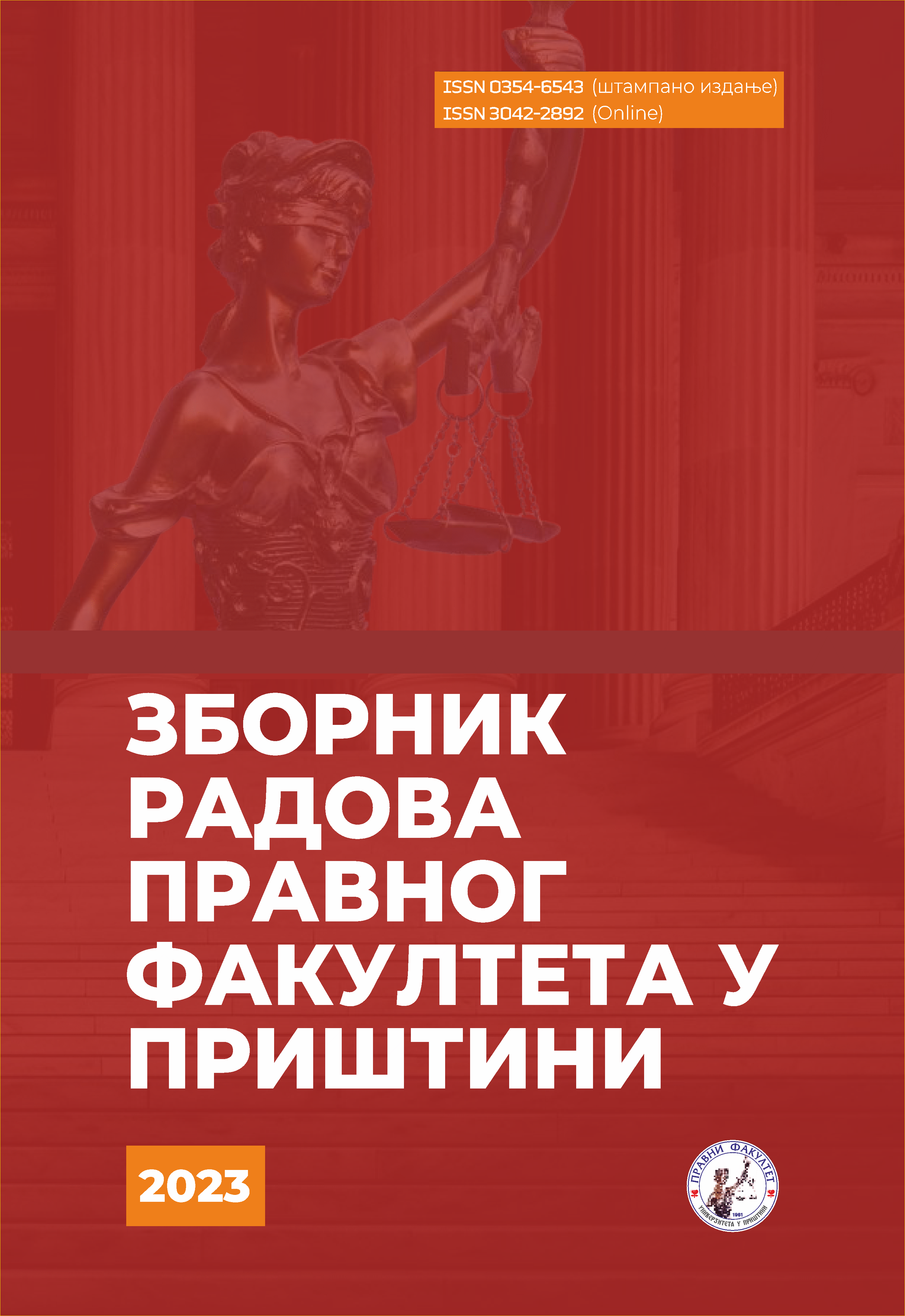QUANTITATIVE EASE AS NON-STANDARD MONETARY POLICY MEASURES
DOI:
https://doi.org/10.63177/zrpfpr.012023.15Keywords:
monetary policy, central bank, non-standard monetary policy measures, quantitative easing, the COVID-19 pandemicAbstract
Quantitative easing or quantitative easing is a type of non-traditional monetary policy implemented by a nation's central bank. This type of policy involves large purchases of assets to stimulate or stabilize the economy. Quantitative easing is usually implemented after other monetary policy instruments have been used - usually when interest rates are already at the bottom and economic performance is still below the central bank's target. For several decades, central banks in advanced economies have typically used the benchmark interest rate as their tool for conducting monetary policy. In response to the global financial crisis of 2007–2009. Years and the deep recession it caused in parts of the world, central banks in many advanced economies lowered their interest rates to near-zero levels. As economic growth remained weak, interest rates remained at near-zero levels, and some central banks used unconventional monetary policy to stimulate economic activity. These unconventional measures have come to the fore again as central banks around the world respond to the severe economic fallout resulting from the global coronavirus (COVID-19) pandemic. This paper deals with the theoretical aspect of unconventional monetary policy measures and discusses the implications of theoretical models for the effectiveness of asset purchases and looks at evidence from a range of empirical studies.
References
Bernanke, B., S. (2009) The Crisis and the Policy Response. Stamp lecture at the London School of Economics, available at:
https://www.federalreserve.gov/newsevents/speech/bernanke20090113a.htm
Blackstone, B., Wessel, D. „Button-Down Central Bank Bets It All“, The Wall Street Journal, 2013.
Carvalho, R., Ranasinghe, D., Wilkes, T. „The life and times of ECB quantitative easing”, 2015-18 Reuters, 2018.
Eggertsson, G., B. & Woodford, M. (2004) Policy Option in a Liquidity Trap. American Economic Review Papers and Proceeding, 94, 76-79.
Gros, D., Alcidi, C., Giovanni, A. „Central Banks in Times of Crisis: The FED vs. the ECB“, CEPS Policy Brief, 2012, 1-22.
Jovancai, A., Stakić, N. Nestandardne mere monetarne politike, Bankarstvo, 1/2013, 58-75
Joyce, M., Miles, D., Scott, A., Vayanos, D. „Quantitative easing and unconventional monetary policy — an introduction“, The Economic Journal, 122(564), 2012, F271–F288.
Krugman, P., R. (1998) It’s baaack: Japan’s slump and the return of the liquidity trap“. Brooking Papers on Economic Activity, No. 2, 137-187.
Мiles, D. Money, banks and quantitative easing, 2009, available at:
Momirović, D., Simonović, Z., Kostić, A. ECB monetary policy during COVID-19. Ekonomika, 67(2), 2021, 13-22.
Murić, M. „Nekonvencionalne mere monetarne politike u funkciji finansijske stabilnosti“. Ekonomika, 58(2), 2012, 219-236.
Oatley, T. (2019). International Political Economy: Sixth Edition, Routledge, 2019.
Rodríguez, C., Carrasco, C. „ECB Policy Responses between 2007 and 2014: a chronological analysis and a money quantity assessment of their effects”, FESSUD, 65/2014, 2-28.
Rudebusch, G. „A Review of the Fed’s Unconventional Monetary Policy”, Research from the Federal Reserve Bank of San Francisco, FRBSF Economic Letter 27/2018, 1-5.
Сиљковић, Б., Дедовић, Н., Дедовић, М. „Тест за монетарне мере Америчке централне банке (FED) - искуства и поуке у доба коронавирусне кризе“, Економски сигнали: пословни магазин, 15(1), 2020, 107-122.
Svensson, L.E.O. (2004) Comment. Brookings Papers on Economic Activity, No 2, 84-93.
Swagel, P. How the Federal Reserve’s Quantitative Easing Affects the Federal Budget, 2022, available at: https://www.cbo.gov/system/files/2022-09/57519-balance-sheet.pdf
Tabaković, J. (2021). How we entered the crisis caused by the COVID-19 pandemic. Ekonomika preduzeća, 69(3-4), 137-167.
Yoshino, N., Chantapacdepong, H., Helble, M. Macroeconomic Shocks and Unconventional Monetary Policy - Impacts on Emerging Markets, Oxford University Press, New York, 2019.
Heather, S. „Quantitative easing: last resort to get credit moving again“, The Guardian. London, 2009, аvailable at: https://www.theguardian.com/business/2009/jan/29/question-and-answer-quantitative-easing
Downloads
Published
How to Cite
Issue
Section
License
Copyright (c) 2023 Зборник радова Правног факултета у Приштини

This work is licensed under a Creative Commons Attribution-NonCommercial 4.0 International License.






